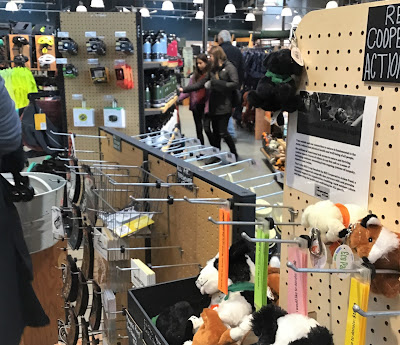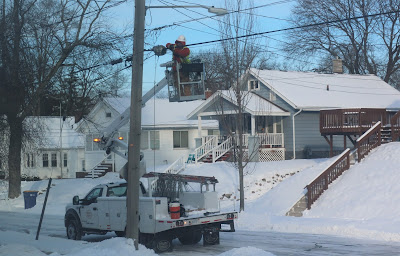 |
| screenshots 19 September 2022 online streaming of Queen Elizabeth II state funeral by bbc.co.uk |
This day is filled with many anthropological facets to reflect on. In list form by row and column:
--------ROW-1
1: Cast in metal, the Queen with father over her shoulder >amazing technology and art to mark a public figure in metal when the long sweep of civilization went from stone to copper to bronze to iron (to plastic and silicon). The family line of succession seems such an old-fashioned way of determining the paramount person.
2: Decoding the many uniforms >military services, public safety (police, fire, medical emergencies), palace staff. Each organized body with its own policies, traditions, tasks, payroll, conflict resolution, and so on.
3: So many Union Flags >encoding the blue of Scotland, the red cross of England and Wales, the diagonals of Northern Ireland, but also presupposing the nation-state idea of administrative bureaucracies to subsume much of what resided in the person and office of the monarch for many generations and dynasties.
4: Symbols of royal ruling authority rest on coffin >globe with Christian crucifix on top, sword of justice, crown of jewels ornamenting the royal person's head.
--------ROW-2
1: So many members of the public look on >to an outsider the spectacle, waiting, and procession seem odd, but to those who knew the royals via news media and popular culture, the event is slightly personal; a sort of borrowed hallow by one's physical association to the proceedings on this day.
2: White-plumed horsemen who have guarded the Queen year after year >the association of horse and authority is ancient but still modern (mounted rider is faster, taller and far-seeing, more deadly than an adversary on foot in many situations).
3: So many countries in their various uniforms process >after the many countries once governed from London gained full independence, the formation of the Commonwealth assured continuing relationships with the former colonial master in matters of science, art, higher education, commerce, military, sport, and so on.
4: The funeral marches provide a soundtrack to the day's proceedings >the band's tempo sets the steady but unhurried walking pace, andante, for the entire body of people on foot, seemingly in perfect synchronicity from left foot to right food.
See also, https://en.wikipedia.org/wiki/Death_and_state_funeral_of_Elizabeth_II#Service_and_processions
--------ROW-3
1: Royal family members trail the body >each uniform regulated by its own rules and symbols. As for safety considerations, uniformed and plain-clothed unarmed and armed services are carefully placed, in addition to contingency plans for the many personnel included in the procession for the protection of the royals and other high-status persons.
2: Near Buckingham Palace with modern London skyline on the horizon >air traffic diverted or suspended to keep the overhead clear of potential threats and disturbing noise of the world.
3: Royal navy sailors holding rope to pull the casket carriage >all of British colonial history, before and after, is shaped by the sea as resource and medium, hence the centrality of sailors - merchant and military. Pikes or spears in the distance >considering the weapons and tools of stone that have been found, this old technology is still formidable and present ceremonially in 2022, even if superseded by other ways to kill each other.
4: Bearskin helmets >each pelt represents one animal's life; seen all together that is a lot of death.
--------ROW-4
1: Hyde Park transfer from carriage to hearse at Duke of Wellington Arch topped by Bodica >statue to remember Brigante leader's widow routing the Roman occupiers at Colchester in 60 CE.
See also, https://en.wikipedia.org/wiki/Boudica
2: Big view windows of the royal hearse >for 200 or more years coffins have been carried in glass enclosures for public view.
3: So many cellphone cameras reach out to record >capturing a piece of history or acknowledging the occasion seems to make members of the public instinctively reach for their pocket phones. Being alive means making and sharing visual records of being there.
4: Motorcycle trio heads the motorcade to Windsor, west of London >crowds line the route to snap photos and bear witness, some bowing their heads at the procession like the officials do.
--------ROW-5
1: Motorcade crowds several rows deep >so many people attend the drive by.
2: At Windsor Castle in the St. George Chapel and vault for the committal service >bereaved kin at lower left and altar at right with royal symbols of authority temporarily moved from casket to altar for later bestowal to the king.
3: Closing words from Bible Psalms 103 about life so quickly passing >floor elevator ever so slowly draws the body under the flooring to the vault.
4: Lone bagpiper in kilt solemnly paces along left side of chapel to open door >music led the procession and also symbolizes the distant sweetness fading into eternity of memories and memory places.


.JPG)








